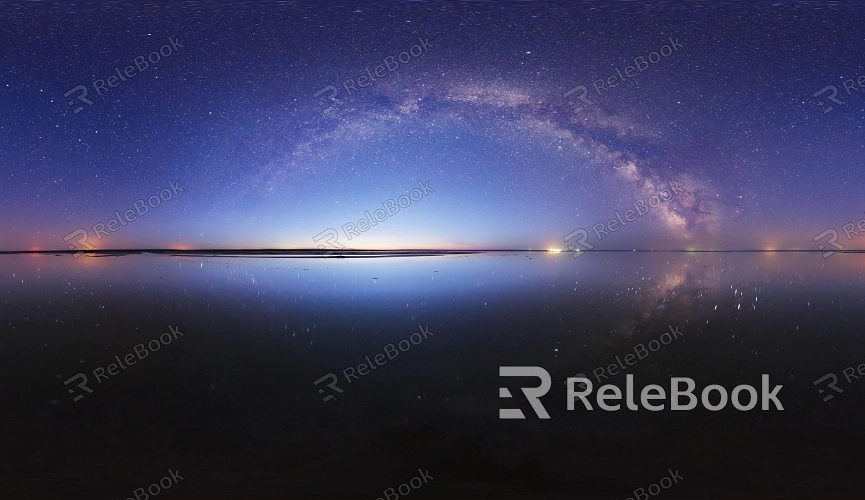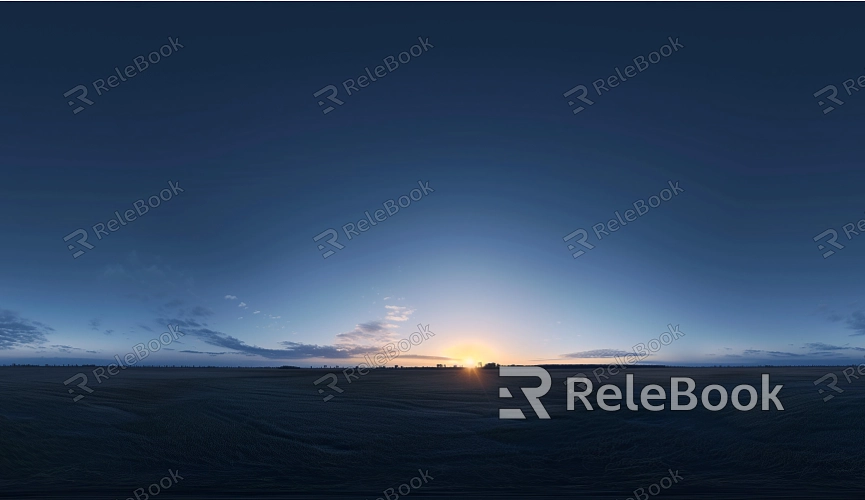How to Make an HDR Color Texture in GIMP
HDR color textures are widely used in architectural visualization, game development, and film production. These textures allow designers to capture intricate lighting effects and vibrant color details, enhancing the overall realism of their work. However, pre-made HDR textures available on the market might not always meet the specific needs of your project. Learning how to create HDR color textures in GIMP can provide you with more flexibility in your design work. This article will explore the steps to create HDR color textures in GIMP and demonstrate how to apply these textures in commonly used 3D software.

1. Prepare the Right Photo Material
Shooting with Multiple Exposures
The first step in creating HDR color textures is to gather suitable photo material. Capturing a scene’s lighting and color information can be achieved by taking multiple photos with different exposures. Typically, using your camera's auto-bracketing (AEB) function to take at least three shots—representing shadows, midtones, and highlights—will ensure you capture the full dynamic range of the scene.
Maintaining Consistency in Photos
During the shooting process, keeping the camera steady is crucial. Use a tripod to secure your camera and avoid movement. Additionally, setting manual focus and white balance helps minimize deviations caused by automatic adjustments, thus improving the consistency of your photos and laying a solid foundation for subsequent HDR composition.
2. Import and Process Photos in GIMP
Importing Photos into GIMP
Open the photos with different exposures in GIMP. You can import these photos as separate layers within a single GIMP file using the “Open as Layers” option under the “File” menu.
Aligning Layers to Eliminate Errors
Even with a tripod, slight misalignments between images may occur. GIMP offers an “Align Tool” to help you manually or automatically align these layers, ensuring seamless integration during the HDR composition process.
3. Create the HDR Image
Composing the HDR Image
While GIMP doesn’t have a direct HDR composition feature, you can manually create HDR effects by using layer blending modes and exposure adjustments. Blend the differently exposed image layers together by using “Lighten” or “Screen” modes and adjust the opacity of each layer to achieve the desired lighting and color effects.
Adjusting Lighting and Contrast
To enhance the HDR effect, you can further adjust the lighting and contrast using the “Levels” or “Curves” tools in GIMP. These adjustments help balance the brightness distribution and highlight color details, making the image appear more realistic and vibrant.

4. Tone Mapping
Understanding the Role of Tone Mapping
Since HDR images usually contain more dynamic range than a display device can show, tone mapping is necessary to compress it into a viewable range. In GIMP, you can manually tone map using the “Curves” tool to adjust the image’s brightness and contrast for a more natural appearance on the screen.
Choosing the Right Tone Mapping Curve
Selecting the right curve during tone mapping is crucial. You can use linear mapping to maintain overall balance or logarithmic mapping to enhance shadow details. By adjusting the curve shape, you can further optimize the color performance of the image, making it better suited to your project’s requirements.
5. Post-Processing and Noise Reduction
Adjusting Color and Saturation
Once the initial HDR image is complete, you can further refine the color balance and saturation to make the colors more vivid and enhance visual appeal. GIMP’s “Color Balance” and “Saturation” tools are useful for achieving this.
Noise Reduction and Detail Enhancement
In some cases, HDR images may generate noise, especially in highlights or shadows. Use GIMP’s “Noise Reduction” filter to effectively reduce noise while preserving image clarity. Additionally, you can use the “Sharpen” tool to enhance details, making the texture clearer and more precise.
6. Exporting and Applying HDR Color Textures
Choosing the Appropriate Export Format
Once you’ve completed the HDR image, the next step is to choose the right file format for export. Common HDR file formats like EXR, HDR, and TIFF can retain high dynamic range information, ensuring that the texture is fully represented in 3D software. If you find creating HDR images too complex or time-consuming, or if you're unsure where to start, consider visiting Relebook. You can download high-quality HDR image resources directly from https://textures.relebook.com/ to enhance your project effortlessly.
Applying Textures in 3D Software
Import the exported HDR color texture into your preferred 3D software, such as Blender, 3ds Max, or Cinema 4D. By adjusting the texture’s scale, brightness, and orientation, you can ensure it matches the scene’s lighting and color, achieving the best visual effect.
7. Optimizing Rendering Settings
Choosing the Right Rendering Engine
Different rendering engines handle HDR textures differently. Opt for a rendering engine that supports global illumination and ray tracing, like V-Ray or Cycles, to significantly improve rendering effects, making HDR color textures appear more realistic in the scene.
Adjusting Rendering Parameters
Depending on your project needs, tweak the sampling rate, lighting intensity, and reflection parameters in the rendering settings to reduce noise and enhance the clarity and realism of the rendered image. Find the optimal balance between rendering speed and quality to ensure satisfactory output.
By following these steps, you should now have a good grasp of how to create HDR color textures in GIMP and how to apply these techniques flexibly in your 3D projects. If you're looking for more high-quality HDR image resources or other 3D texture materials, consider exploring Relebook. On Relebook, you can easily download and use these resources to achieve outstanding visual effects in your projects.

